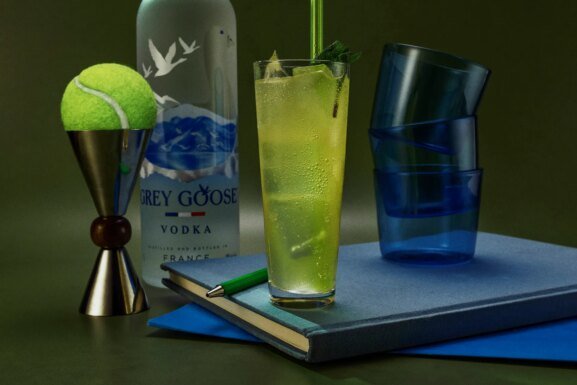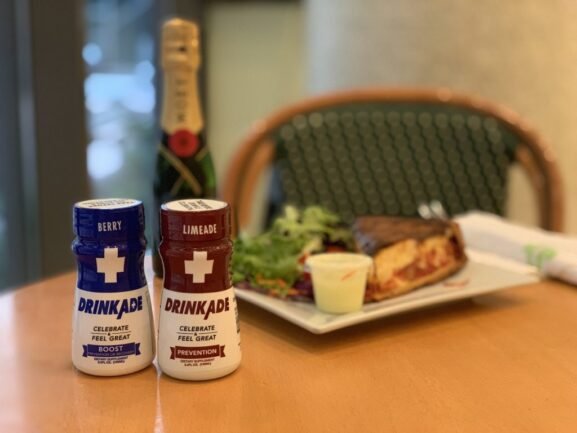Inclusive, Sustainable, and Alcohol-Free This NA Sparkling Wine Checks All of Our Boxes
Finding non-alcoholic sparkling wine options has become easier than ever, thanks to the rapid growth of the alcohol-free beverage sector. But tracking down an NA brand that puts as much effort into the taste, quality and enjoyability of its products as its alcoholic counterparts isn’t as simple. After searching high and low, we’ve finally found a reliable NA sparkling wine that checks all of our boxes: It’s inclusive, sustainable and, above all, tastes delicious. Best of all, it’s produced by Spain’s oldest Cava house.
Codorníu Zero is the answer to all of your alcohol-free sparkling wine needs. With over four centuries of sparkling wine production history, the brand’s non-alcoholic alternative has an impressive pedigree—and it shows. Get to know the history of the brand, its commitment to sustainability and innovation and just exactly how Codorníu Zero is made.
Codorníu: Centuries of Sparkling Wine Expertise
The Codorníu production facility dates back to 1551, rendering it the oldest winery in all of Spain. In 1659, heiress Anna Codorníu married winegrower Miquel Raventós, marking a pivotal moment in the estate’s winemaking history. Two centuries later, Codorníu descendant Josep Raventós created the first bottle of sparkling wine using the traditional method in Spain in 1872, thus giving birth to the signature Cava style still popular across Spain today. By 1898, the family was fervently advertising Cava outside of Catalonia, specifically through the use of their unique avant-garde style of posters.
Over the next two centuries, Codorníu continued to make waves with their traditional method sparkling wines, whether it be featuring its wines on television commercials to profoundly growing the wine style’s recognition across the export market. In 1984, the estate released the first vintage of its flagship Anna de Codorníu cuvée, followed by a rosé cuvée in 2002. The prestigious Ars Collecta Collection was launched in 2016, followed by the introduction of the first ‘Cavas de Paraje Calificado’ by the winery in 2017, and, most recently, Codorníu Zero in 2014.
How Codorníu Zero Is Made
Contrary to the many non-alcoholic sparkling wine alternatives on the market made from carbonated grape juice, Codorníu Zero is a true de-alcoholized wine, meaning that it is made in exactly the same way as traditional wine through fermentation and vinification, and then de-alcoholized. After vinification, Codorníu Zero undergoes an innovative distillation process that removes only the alcohol, preserving the wine’s original aromatic components. This process reduces the alcohol content to less than 0.5%, allowing it to be classified as non-alcoholic without sacrificing its texture, flavor, or aroma.
This cutting-edge process reduces the wine’s alcohol content to less than 0.5% ABV, allowing it to be classified as non-alcoholic, but doesn’t sacrifice texture, flavor or aromatics. Simply put, the resulting wine retains its refreshing fruit characteristics and signature sparkle, all without the presence of alcohol. The product speaks for itself: In 2023, Codorníu Zero White took home a bronze medal at the 2023 Drinks Business Global Low & No Alcohol Wine Masters, along with a silver medal for its Zero Rosé.


Pioneer of Sustainability and Low/No-Alcohol Movements
Since its founding days, Codorníu has been at the forefront of consumer trends. It’s also amped up its commitment to sustainability. In 2020, the estate began transitioning all of its vineyards to organic farming, and is set to achieve official certification in 2023. With regards to market tendencies, Codorníu Zero is proud to be a part of the greater movement towards non-alcoholic alternatives through offering a sophisticated, quality-focused and inclusive option.
In recent years, Codorníu has extensively studied the reasons for shifting consumer habits, which range from health and wellness-focused concerns to cultural restrictions. Many consumers are also “sober curious” and rethinking their relationships with alcohol. But regardless of one’s reasoning, Codorníu Zero offers a means to enjoy the social and sensory aspects of drinking wine without the unwanted impacts of alcohol.


What Codorníu Zero Tastes Like (and How to Best Enjoy It)
Produced from a regional blend of Xarel·lo and Chardonnay—and using the same meticulous vinification methods (plus dealcoholization) as its alcoholic counterparts—Codorníu Zero pours a beautiful golden hue in the glass and offers a bright, refreshing flavor profile marked by signature flavors of green apple, citrus and a touch of white flowers.
Like other sparkling wines, Codorníu Zero pairs perfectly with a variety of foods, including light appetizers, seafood, fresh salads and a variety of desserts. It can also be enjoyed on its own and is best served chilled. Pro tip: For an instant mental escape to the sun-soaked streets of Catalonia’s capital city of Barcelona, spread some shredded beefsteak tomato with coarse sea salt atop slice of crusty bread, pop the cork on a bottle of Codorníu Zero and enjoy a Spanish-inspired aperitivo hour at home.
Codorníu Zero is packaged using similar labeling as its alcoholic Cava counterpart, which reflects the brand’s commitment to premium quality. It provides a similar sensory experience to that of a traditional sparkling wine, rendering it the perfect alternative for celebrations, gatherings and occasions where non-alcoholic beverages are preferred.
Above all, Codorníu Zero offers a delicious, quality-forward alternative for those choosing to reduce or eliminate alcohol consumption—and the proof is in the bottle.


